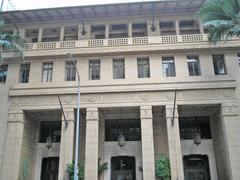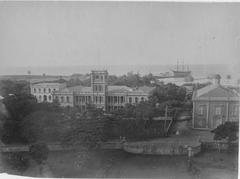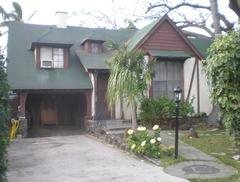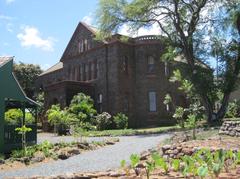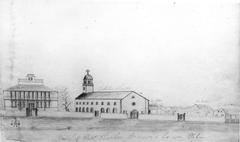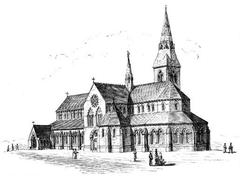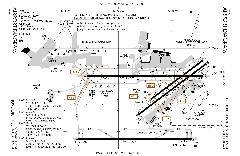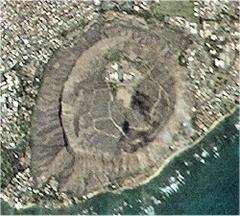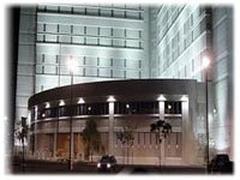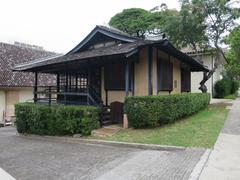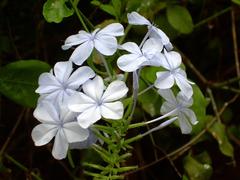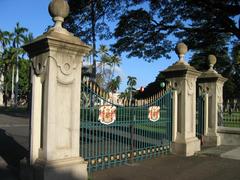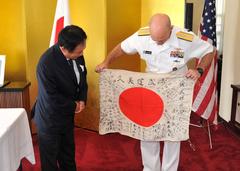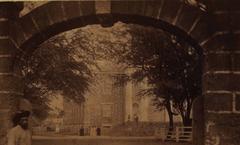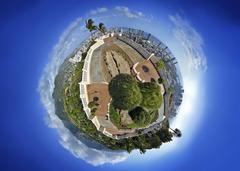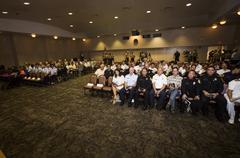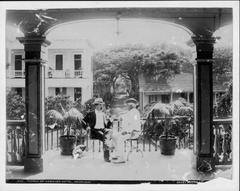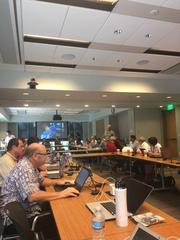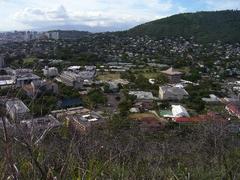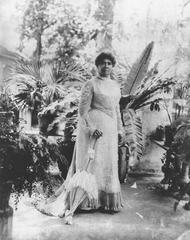
Oʻahu Cemetery Visiting Hours, Tickets, and Travel Guide
Date: 04/07/2025
Introduction
Nestled in the tranquil Nuʻuanu Valley of Honolulu, Oʻahu Cemetery stands as the oldest public graveyard on the island and a profound testament to Hawaiʻi’s rich and diverse history. Established in 1844, the cemetery is both a cultural landmark and an outdoor museum, renowned for its Victorian funerary art and the multicultural heritage reflected in its graves. Here, visitors can trace the lives of missionaries, political leaders, artists, and everyday residents, all woven into the fabric of Honolulu’s past. Its serene landscape, adorned with ornate angels, Celtic crosses, and marble obelisks, offers a contemplative respite amid the bustling city.
Beyond its artistry and history, Oʻahu Cemetery is notable for innovations such as Hawaiʻi’s first public crematory and its role in significant events like World War II. The cemetery’s proximity to sites such as the Royal Mausoleum and the National Memorial Cemetery of the Pacific further enriches its cultural context. This guide equips you with essential information about visiting hours, admission, accessibility, guided tours, and tips for a respectful visit, ensuring a meaningful experience. For deeper insights and planning, refer to resources like the Historic Hawaii Foundation and Only in Hawaii.
Table of Contents
- Introduction
- History and Development
- Social and Cultural Significance
- Notable Interments and Monuments
- Visiting Oʻahu Cemetery: Hours, Tickets, and Accessibility
- Visitor Etiquette and Preservation
- Nearby Attractions
- Frequently Asked Questions (FAQ)
- Conclusion and Call to Action
- References
History and Development
Founding and Early Growth
Oʻahu Cemetery was established in November 1844 as Honolulu’s first non-denominational public graveyard, created to serve a growing population spurred by the whaling industry. Situated on a 4.38-acre parcel purchased for $300, the cemetery quickly became a vital community institution. By 1860, additional land was acquired, expanding its capacity and historical significance. Early administration included respected leaders like Rev. Samuel C. Damon (Wikipedia; Only in Hawaii).
Expansion and Victorian Artistry
By the late 19th century, Oʻahu Cemetery had grown to about 18 acres and became known for its elaborate Victorian funerary art. Visitors encounter a rich array of angels, cherubs, Celtic crosses, urns, and weeping willows, as well as iron fences and marble obelisks. These features transform the cemetery into a unique outdoor museum reflecting the era’s values and aesthetics (Historic Hawaii Foundation). The grounds are shaded by heritage trees, creating a peaceful retreat in Nuʻuanu.
Innovations and Notable Events
In 1906, Oʻahu Cemetery established Hawaiʻi’s first public crematory, designed by Oliver G. Traphagen (Wikipedia). During World War II, the crematory was used to destroy $200 million in overprinted U.S. currency, preventing it from falling into enemy hands after Pearl Harbor. The cemetery also honors firefighters and sailors who lost their lives during the December 7, 1941 attack, marked by dedicated monuments and special plots.
Social and Cultural Significance
Oʻahu Cemetery embodies Hawaiʻi’s multicultural society. It is the final resting place for missionaries, politicians, artists, and residents from diverse backgrounds. Notable individuals interred here include Alexander Joy Cartwright, Jr. (the “Father of American Baseball”), John Papa Iʻi, Benjamin Franklin Dillingham, Ululani Jabulka, and Bina Mossman. The presence of headstones inscribed in Hawaiian, English, Chinese, and Japanese highlights the island’s pluralistic heritage (Historic Hawaii Foundation; Honolulu Magazine).
Sections dedicated to Chinese and Japanese communities, as well as Christian and secular monuments, illustrate the blending of religious and cultural traditions. The cemetery’s garden-like setting echoes the 19th-century trend of creating park-like cemeteries for reflection and remembrance.
Notable Interments and Monuments
- Alexander Joy Cartwright, Jr.: Recognized as the “Father of American Baseball.”
- Joseph Campbell: The influential American mythologist.
- Reverend Hiram Bingham and Amos Starr Cooke: Leaders among early missionaries, instrumental in Hawaiʻi’s religious and educational development.
- Sanford B. Dole and Lorrin A. Thurston: Key political figures during the transition from monarchy to territorial government.
- Robert W. Wilcox: Revolutionary leader and first delegate to the U.S. Congress from Hawaiʻi.
- Veterans’ Sections: Honoring those who served in the Civil War, World Wars I and II.
- Victorian Monuments and Obelisks: Showcasing elaborate carvings and symbolic motifs, blending Western and Hawaiian designs.
The cemetery also features unique graves of musicians, artists, and sports pioneers, as well as monuments blending petroglyphs and native flora.
Visiting Oʻahu Cemetery: Hours, Tickets, and Accessibility
- Hours: Generally open daily from 8:00 AM to 4:30 PM (Oʻahu Cemetery Official Site). Some sources list slightly different hours; confirm before visiting.
- Admission: Free of charge for all visitors.
- Guided Tours: Offered periodically by the cemetery, local historians, or organizations like the Historic Hawaii Foundation. Special events such as the annual Pūpū Theatre bring history to life through dramatic performances.
- Location: 2162 Nuʻuanu Avenue, Honolulu, HI 96817. Easily accessible by car and public transportation.
- Accessibility: Most paths are paved and wheelchair accessible, though some older sections may have uneven terrain. Maps and guides are available at the entrance.
- Parking: Free on-site parking; accessible spaces available.
- Photography: Permitted, but visitors should avoid disturbing active funerals or private ceremonies.
- Pets: Not allowed on cemetery grounds.
Visitor Etiquette and Preservation
To honor the cemetery’s sacred and historical nature, visitors should:
- Dress modestly and respectfully.
- Maintain a quiet demeanor.
- Refrain from touching or climbing on monuments.
- Be mindful of photography, especially during ceremonies or when others are present.
- Avoid leaving artificial flowers or non-biodegradable items.
Oʻahu Cemetery’s non-profit management provides perpetual care and preservation, with ongoing efforts to restore monuments and enhance public access. Interpretive signage, guided tours, and published materials help deepen visitor understanding.
Nearby Attractions
Oʻahu Cemetery’s location makes it convenient to visit additional historical and cultural sites, including:
- Royal Mausoleum of Hawaiʻi (Mauna ʻAla): Burial place of Hawaiian royalty, located directly across Nuʻuanu Avenue.
- National Memorial Cemetery of the Pacific (Punchbowl Crater): A prominent military cemetery and memorial (Hawaii Activities).
- Kyoto Gardens and Buddhist Temple: Noted for their architectural and cultural significance, adjacent to the cemetery.
Exploring these sites together provides a comprehensive view of Honolulu’s heritage.
Frequently Asked Questions (FAQ)
Q: What are the Oʻahu Cemetery visiting hours?
A: The cemetery is open daily from 8:00 AM to 4:30 PM, with some variations. Always check the official website for current hours.
Q: Is there an admission fee or ticket required?
A: No, admission is free. Some special tours or events may require advance booking or a fee.
Q: Are guided tours available?
A: Yes, periodic guided tours and special events are offered. Check the official website or contact staff for schedules.
Q: Is the cemetery accessible for people with disabilities?
A: Most paths are paved and accessible, but some older areas may have uneven terrain.
Q: Can I take photographs inside the cemetery?
A: Yes, photography is allowed, but please be respectful, especially during funerals.
Q: Are pets allowed?
A: No, pets are not permitted on the grounds.
Q: Where is Oʻahu Cemetery located?
A: 2162 Nuʻuanu Avenue, Honolulu, HI 96817.
Conclusion and Call to Action
Oʻahu Cemetery is a living archive of Hawaiʻi’s history and culture. Its unique combination of serene beauty, notable interments, and educational opportunities make it a must-visit for anyone interested in Honolulu’s past. With free admission, guided tours, and proximity to other important sites, it offers a comprehensive and reflective experience.
To make the most of your visit, check the official cemetery website for the latest information on hours, tours, and events. Download the Audiala app for audio tours and in-depth historical content, and follow us on social media to stay updated on special programming and related Honolulu historical sites.
References and Further Reading
- Oʻahu Cemetery Celebrates Its 175th Anniversary, Historic Hawaii Foundation (Historic Hawaii Foundation)
- Oʻahu Cemetery, Honolulu, Only in Hawaii (Only in Hawaii)
- Oʻahu Cemetery, Wikipedia (Wikipedia)
- Spooky Oʻahu Cemeteries, Honolulu Magazine (Honolulu Magazine)
- Oʻahu Cemetery Official Site (Oʻahu Cemetery Official Site)
- Oʻahu Cemetery Information, EverLoved (EverLoved)
- Hawaii Activities, Historical Oʻahu (Hawaii Activities)
- Island Life Hawaii, Oʻahu Visitor’s Guide (Island Life Hawaii)
- Love Oʻahu, History and Culture (Love Oʻahu)






















